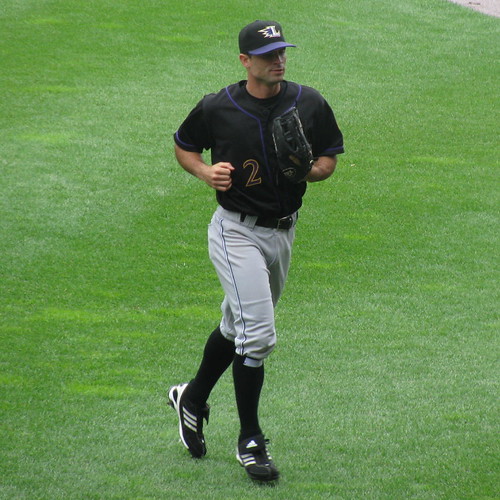 |
| Photo credit: TJ Perreira on Flickr. |
The guest speaker was former major league player Chris Burke, who delivered a worthwhile presentation. I especially appreciated the fact that he answered our questions fairly directly, even when they involved controversial subjects such as steroid use in baseball. Burke grew up in Louisville, played his college baseball at Tennessee (All-American SS on the runner-up College World Series finalist team) and then had a fairly significant role on a Houston Astros team that made the World Series in 2005. In the NLDS that season, he hit the series winning home run in the 18th inning of game 4.
After Burke finished and departed, I gave a presentation: "Can Small Market Teams Compete? Revisited." That link takes you to my PowerPoint. As the title suggests, this was a much updated version of a talk I gave to the same local SABR chapter in April 2000.
My 2000 presentation focused on the Oakland A's, much as Michael Lewis did in his 2003 book Moneyball. However, today's talk focused on the 2014 Kansas City Royals, the first small market team to make the World Series since Cleveland did it in 1997. For my talk, I defined the smallest handful of cities as small market: Milwaukee, Kansas City, Cleveland, Cincinnati and Pittsburgh. Oakland shares the Bay area with San Francisco, but is often viewed as small market.
While the A's of 15 years ago emphasized on-base percentage, college pitchers, and "Ken Phelps All Stars" (such as Geronimo Berroa and Matt Stairs), the 2014 Royals apparently identified new market inefficiencies: multiple hard-throwing short relievers, terrific outfield defense, fly-ball pitch-to-contact starters, and an all-star quality catcher.
Visit this blog's homepage.
For 140 character IR and foreign policy talk, follow me on twitter.
Or for basketball, baseball, movies or other stuff, follow this personal twitter account.

No comments:
Post a Comment